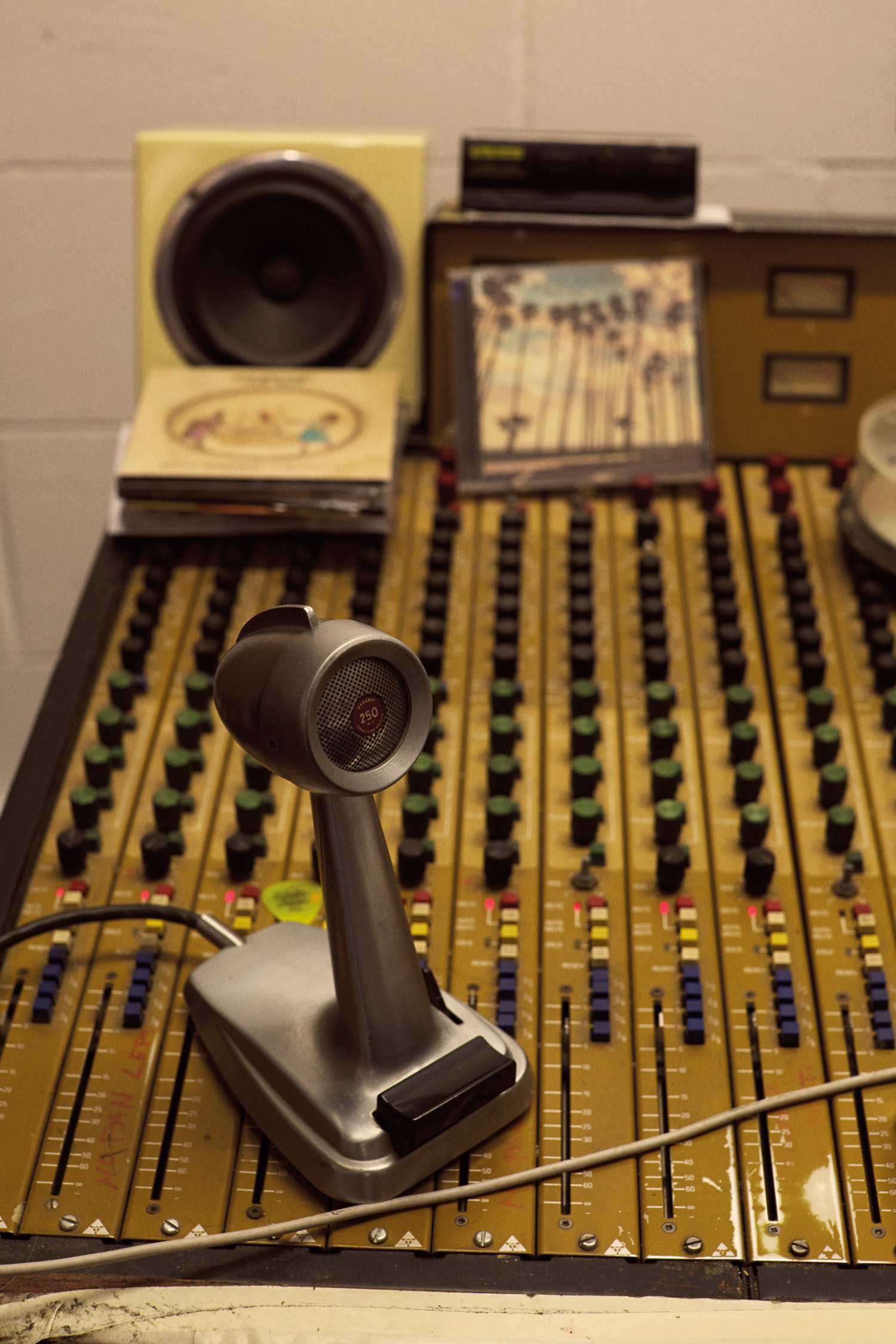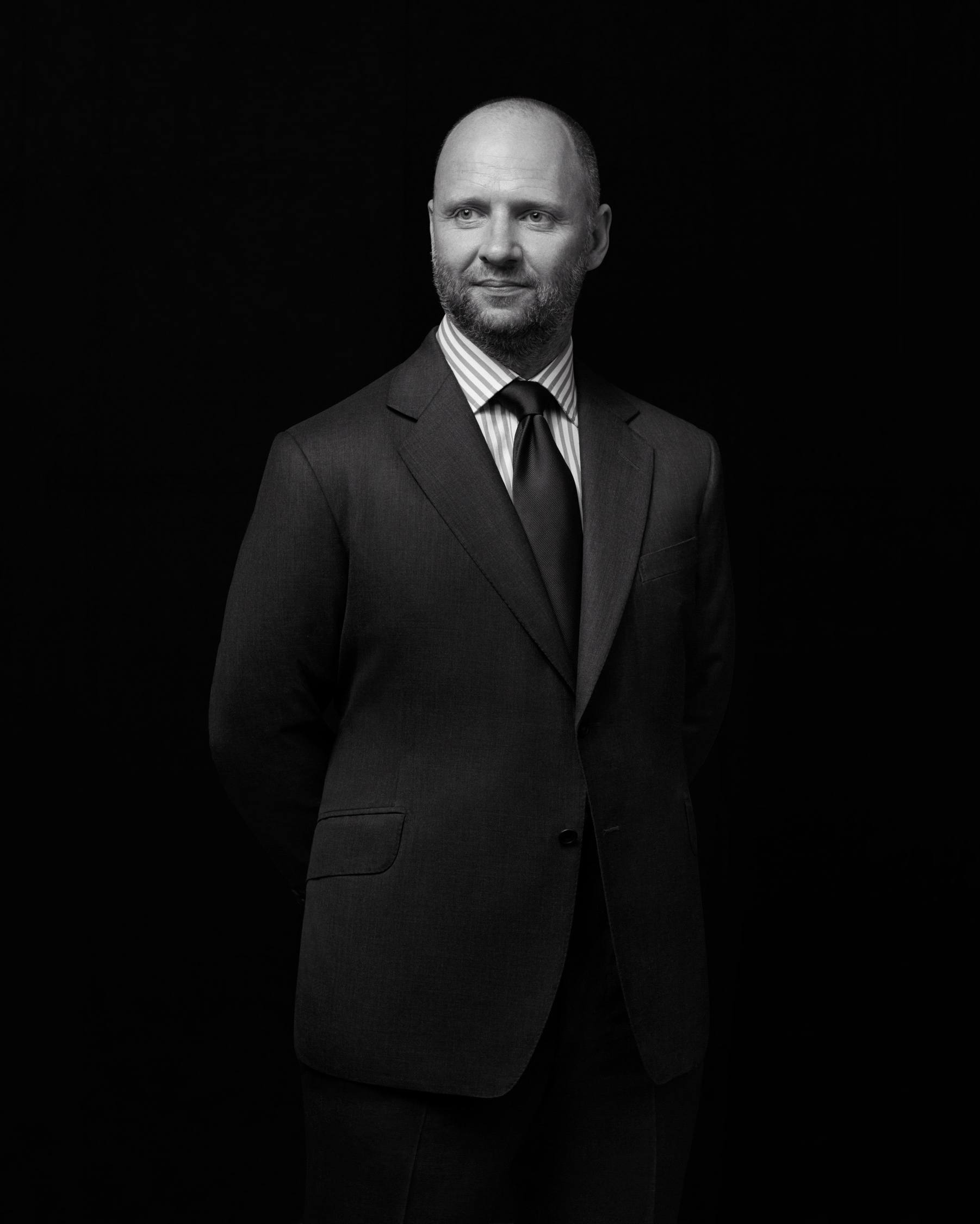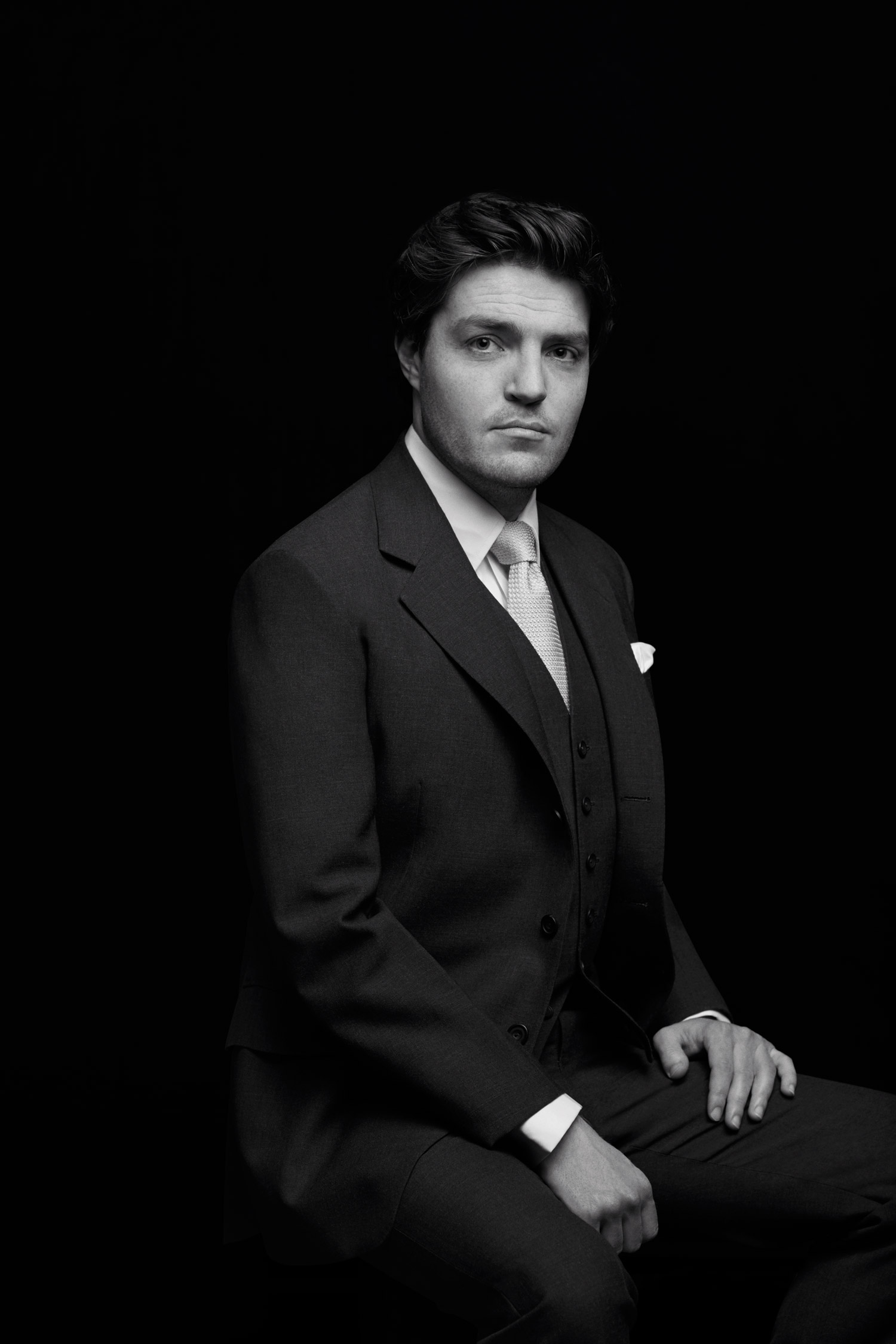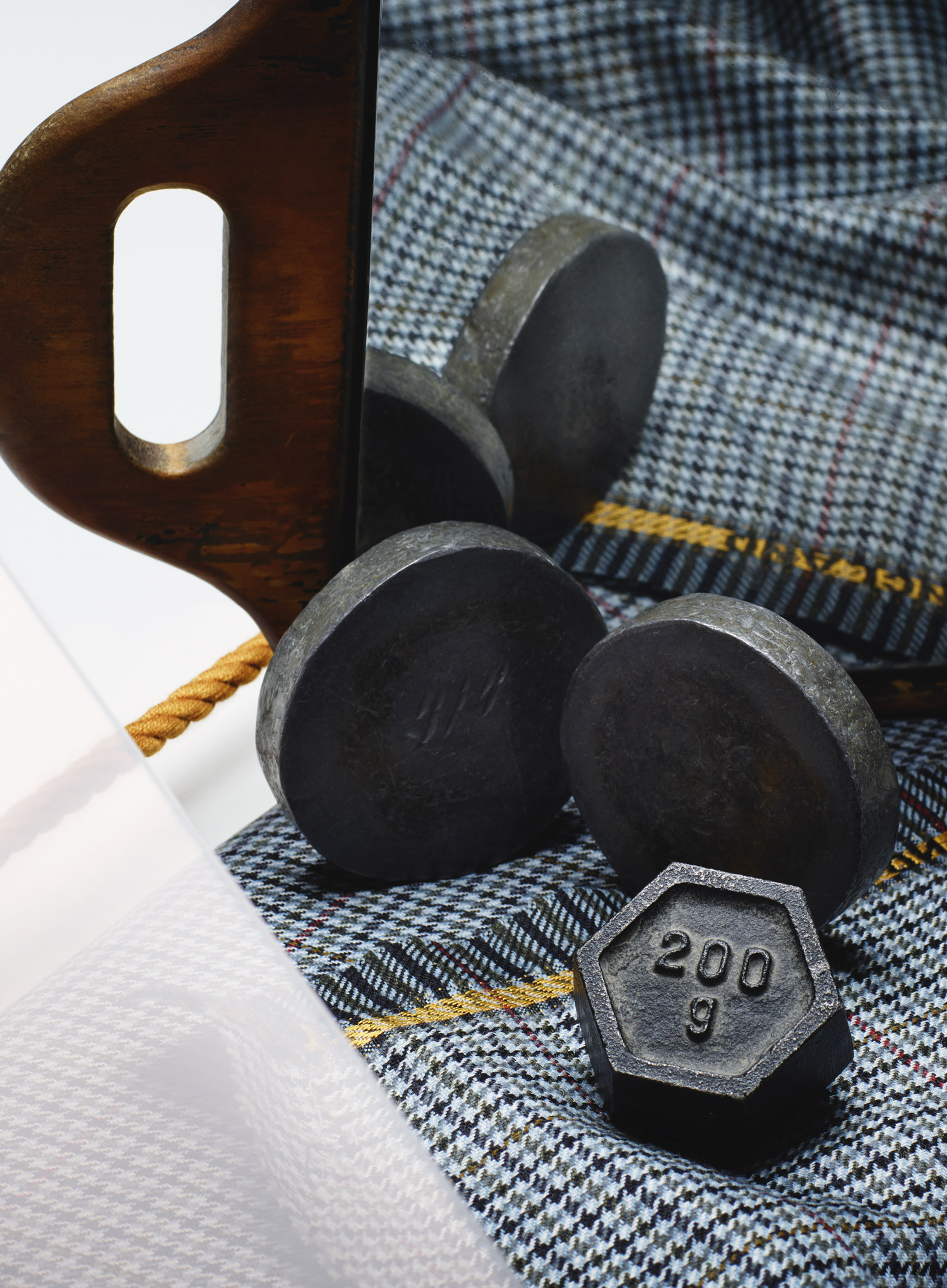Sarah Cracknell walks into a Notting Hill pub at lunchtime looking every inch the chic west Londoner. She’s refreshingly early and remarkably fresh for someone who’s just gotten off the Tube, particularly the Oxford Tube, a “luxury” coach service that ferries the Saint Etienne front woman from the Oxfordshire home that she shares with her husband, the band’s manager Martin Kelly, and two young sons. Then again, as a performing musician, she’s a dab hand at emerging butterfly-like from the grubby chrysalis of a tour bus.
Formed in 1991, Saint Etienne has been described by The New York Times as “wildly ahead of their time and hopelessly behind it”. But while they’re oft labelled a 90s indie (or indie-dance) band in journalistic shorthand, the trio — Cracknell plus former music writers Bob Stanley and Pete Wiggs — have resisted both categorisations, sometimes strenuously. “It was difficult around the Britpop years,” Cracknell admits. “They were desperately trying to suck us into being a Britpop band, but we never really fitted — I don’t know why people thought we did. But anyway, we managed to escape that one.”
“Escape” is the operative word: when the Britpop bubble burst, taking with it the bands who had been influenced by Saint Etienne’s 60s overtones, if not their dance sensibilities, Cracknell et al floated above the wreckage. But that’s the evolutionary advantage of not being tied to a particular era or genre. A quarter of a century later, Saint Etienne are still playing Glastonbury, performing their debut album Foxbase Alpha in its entirety this summer (even adding extra dates by popular demand) and officially “going up” in the Sunday Times Style. Indeed, after the band’s music was used at London Fashion Week, the tastemaking newspaper supplement declared that “La Cracknell’s back”. But they’ve really never gone anywhere — apart from popping back to the countryside in-between gigs.
Cracknell’s own affection for a bygone era — the 60s — precedes Saint Etienne, dating all the way back to when she was 13. “I used to get the local paper on a Friday and I would mark out every single jumble sale I could possibly get to, on foot or on the bus,” she says. “I would go and come back with bin liners of clothes — anything with a bit of lurex, or some big buttons.” She wasn’t even particularly into 60s music at that point: “I was just drawn to the shapes — and the sparkle factor!” Her retro taste extends beyond her wardrobe: she spent six months watching out for a suitable TV, finally happening upon an old, reconditioned Bang & Olufsen, and nearly the same amount of time enduring food going off while she looked for a “new” 60s-style fridge to replace their expired model.
“I like well-made things. The thing about something that fits really well is that it’s not a fashion item, so you don’t go, ‘Oh, I’ll sling that out now’”
That explains why, when it came time to deciding precisely what to bespeak at her English Cut fitting, she turned to the same decade for inspiration. “I found a photo of Bridget Bardot in a fantastic suit — I can show it to you, it’s on my phone somewhere,” says Cracknell, rummaging in her handbag. “It’s quite fitted, very 60s-looking.” She was also impressed by the old-fashioned style of English Cut’s London home on St. George Street in Mayfair. “It’s just amazing,” she says. “There’s all these wood-panelled booths where you go in to get measured, and ancient ledgers.” Some people can find that sense of history a little intimidating, but Cracknell, if anything, was impressed: “I was just looking around the whole time going, ‘Wow!’” Shades of Diagon Alley? It reminded me of those old pubs that you get in Dublin with little snugs. It’s beautiful.”

The lurex, however, has been replaced by a blue pinstripe Harrison’s flannel — perhaps on the advice of Tom. Indeed, she has “softened” the whole 60s look for her suit. “I used to wear more retro styles in the 90s” she says. “Now it’s more of a nod to that time. I like to mix it up. You don’t want to look like some throwback.” While she still buys “the odd thing” from Topshop, the rate at which she accumulates fast fashion has slowed down. “I tend to buy things with a better cut, that fits better,” she says. “I like well-made things.” Tailoring is a constant presence in her rotation (“I suit a suit,” she laughs), not least because it’s inherently less throwaway. “The thing about something that fits really well is that it’s not a fashion item,” she says. “So you don’t go, ‘Oh, I’ll sling that out now.’ I’ve got that many tailored jackets in my wardrobe” — she holds her hands out wide like an angler describing a mythical catch — “and I keep them all.”
Cracknell’s signature piece however — onstage at least — is the somewhat showier feather boa. “I don’t know, I just like them,” she says when pushed to explain the appeal of her fine-feathered friends. “They’re fluffy, what can I say?” She’s more insightful on the subject of where to source the finest ones. “You have to buy them in John Lewis,” she insists. “They’re of superior quality. If you get them from anywher else then they shed, they fall apart and you trail feathers everywhere you go.” It’s not too hard though to see why a feather boa might appeal to a performer: it’s a quick and easy way to jazz up an outfit. “When you do gigs, you need to dress up — colour-wise or shape, something that’s a bit wow — because of being a small person on a big stage,” she explains. “You have to be a bit larger than life, more so than you would if you were going shopping or to the pub.”

The dissonance between onstage and off is an occupational hazard for performers, sartorially if nothing else. There’s a (possibly apocryphal) story about Prince, early on in his career, being sighted by two female fans wearing his ‘civilian’ clothes — T-shirt, jeans, trainers — while performing some mundane task, like moving boxes. They refused to believe that it could be him; from that moment, he resolved to always act, and dress, like Prince the stage artist. “I remember when we first moved into the Oxfordshire village,” says Cracknell. “I was a bit windswept, with an anorak on. This woman came over and said, ‘Ooh, I don’t know you.’ I said, ‘Oh yes, I’ve just moved into the house down there.’ She looked at me up and down and said, ‘I thought a pop star had bought it!’ I was like, ‘Cheers’!” It could be that this played on her mind when she attended a festival a few years ago as a camping punter: “I bumped into some friends and they said, ‘You don’t look like you’ve been in a tent.’ I said, ‘I’ve got to keep up appearances…’” With the exception of the muddier festivals, slipping out of the wellies that form the foundation of her everyday country wardrobe is all part of the act. “You feel almost like you’re putting on a uniform,” says Cracknell. “Especially if you’ve just gotten off a sleeper bus. It can be a bit grim.” It’s not all glitz, glamour and feather boas. “Often, we’re backstage searching for an iron,” she says. “That happens a lot. You’d be surprised how many venues have them.” Indeed, at Saint Etienne’s first live show in London, pre-Cracknell, at Heaven in Charing Cross, Bob and Pete balanced their synthesisers on top of ironing boards. Their band mate shares this resourcefulness. She’s a frugal packer: “I think it’s from years of having to drag my suitcases through airports and on and off sleeper buses.” She even makes her own stage clothes when she can’t find what she wants, albeit only uncomplicated tops — with hookand- eye fastenings, no zips. “They’re only for show. I don’t think Tom would be too impressed with the patterns and construction,” she laughs.
While Cracknell was in and out of bands until aged 15, she nearly landed a different stage role after growing bored of not getting a deal, doing a year at the Italia Conti Academy of Theatre Arts and some fringe until she met Bob and Pete. She also had dramatic pedigree via her father Derek, a prolific assistant director who worked with Stanley Kubrick and on James Bond films such as Live And Let Die. “I remember being really fascinated by the bit where Roger Moore is tied up above a pool of sharks, dripping blood,” she says, re-enacting her younger self’s sharp, shocked intake of breath. Nowadays, her setting is less exotic and more rural and, because of the nature of her job, work comes in waves. “If you’ve got a record out, you suddenly have a whole spate of activity: interviews, photo shoots and gigs,” she says. “Then it can be very quiet for a few months. But it’s good because it’s varied. There’s always something coming up. And until then, you can have a bit of downtime and be really lazy, just looking after the children.”
Far from a temptation to let the grass grow under her feet, the countryside in fact provided direct inspiration for Cracknell’s solo album Red Kite, which she released last year. “The songs were very much about the area that I live in,” she says. “It was quite pastoral, because I’m surrounded by fields and trees — that was quite important both lyrically and just sort of feel-wise.” The region also proved surprisingly handy on a logistical level: the album was recorded in her neighbour’s barn, within two weeks. “We hired equipment and set up a temporary studio, so to abandon it all would mean to take the whole thing down again, take it away and come back again,” she says. “The people I was working with [including the Manic Street Preachers’ Nicky Wire] were also living in the house, so we kind of had to do it in two weeks.” The time pressure was conducive to creativity. “I love a deadline,” says Cracknell. “Give me a deadline and I can become very creative! My children are like that: they won’t do their homework until the day before it’s due. Or maybe it’s just human nature? I don’t know.”
The romantic notion of musical inspiration is that it can strike anytime and anywhere — in the shower, while walking the dog — and in any form. But the reality is that the muse is more likely to descend when you actually sit down to write. “You do get ideas that crop into your head, and then it’s a building thing,” says Cracknell. It helps that she normally has writing partners. “I find it harder to write on my own,” she says. “I get distracted. If I’ve got somebody else to bounce ideas off, I find that the most productive.” Although, for the new Saint Etienne album that they’re currently writing, because Bob has had a baby, they’ve been working on ideas separately then bringing them to the table to chew over. “People in other bands do find it weird that we write songs together all the time,” says Cracknell. “But when you’ve been together such a long time, you’re so in tune. Plus there are no egos, so it’s easy. No one gets uppity if somebody says, ‘That’s good, but why don’t we try this instead?’”
Saint Etienne might be fast workers when it comes down to it — “We’ve always been pretty swift at recording things” — but their long players display a remarkably long shelf life, as evinced by the Foxbase Alpha gigs. Is there some intangible art to music then that separates the crafted from the merely manufactured? Or is it a science — a clever one, sure, but ultimately just a formula? “We did a bit of writing with a company called Xenomania, who’ve had so many hits: Girls Aloud, Sugababes and Pet Shop Boys, among others,” says Cracknell. “They were quite formulaic about it. Clearly it works. But I don’t know about the longevity. I think our fans, who’ve been with us for years, they get what we’re about and they get that we feel quite passionately about what we do. It’s got to be right — down to artwork, everything.”
Perhaps another element in Saint Etienne’s longevity is that they’ve never done too long a stint of touring. “The most we’ve ever done is two and a half, three weeks,” says Cracknell. “I think that’s when you start getting on each other’s nerves and losing the will to live. And being away from writing and recording too long doesn’t help.” While the band mates don’t live in each other’s pockets, thus not breeding the contempt born of over-familiarity, they are in fairly constant contact, although disappointingly there isn’t a Saint Etienne WhatsApp group. Maybe it’s fitting though that their preferred mode of communication is rather more retro: “There is a thing called the telephone, you know.”




